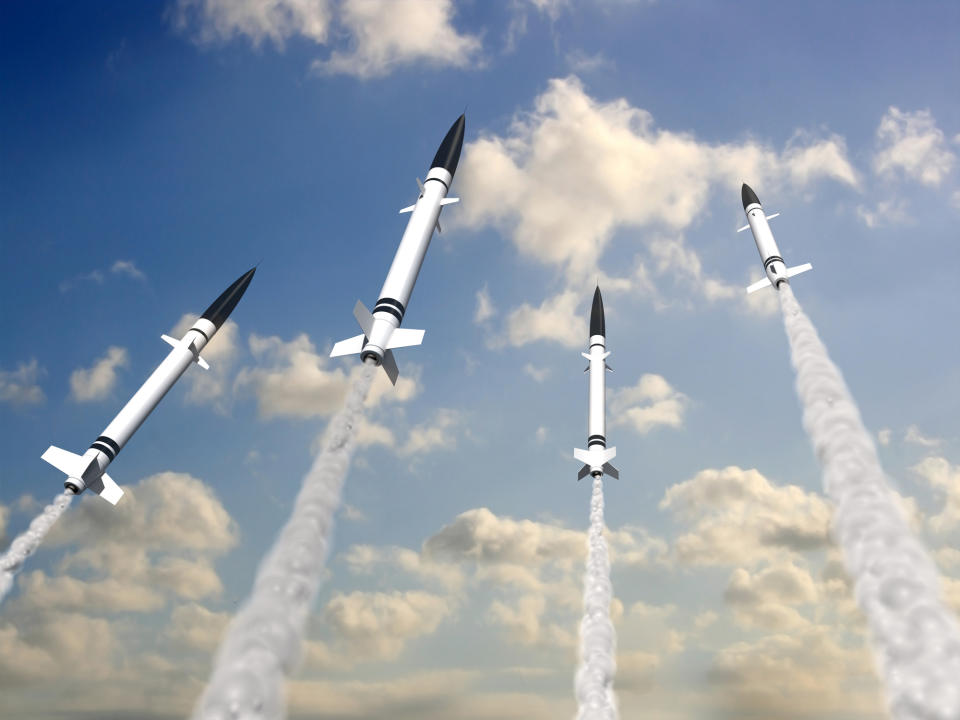[ad_1]

What do Iranian drones, Russian hypersonic missiles, and China’s DF-21D “carrier killer” missiles have in common? All three pose a clear and present threat to U.S. forces and their allies, and all three require air defense missiles to protect against this threat.
This is a problem faced by the US and allied militaries, as well as defense companies such as Lockheed Martin (NYSE: LMT) and RTX Companyfamous makers Patriot air defense missile (As well as many other missiles, such as the famous HIMARS missile used today in Ukraine.)
Defense products, as you can see, involve long supply chains – similar to what we see in Automotive industry — where a single company might produce a final product (like the Patriot) but rely on subcontractors to produce the components that go into that final product. You may recall how a shortage of low-tech semiconductor chips used in the auto industry led to widespread car shortages during the pandemic, for example. Well, today, the slow-moving shortage of rocket engines is a bottleneck for missile production by U.S. defense companies as well.
From problem to solution
Wall Street Journal Reports that Northrop Grumman and L3 Harris The two defense giants dominate the rocket engine business. Both companies have been heavily criticized by Lockheed Martin and RTX for failing to produce enough to meet demand. To remedy this, Lockheed Martin has proposed going into rocket engine manufacturing itself.
It’s a massive undertaking, and one that Lockheed can’t do alone. Last week, the company confirmed it would form a joint venture with its defense rival. General Dynamics (NYSE: GD)The company aims to develop a new generation of military rocket engines to supplement limited supplies produced by Northrop and L3Harris.
In this partnership, Lockheed appears to be acting largely as a silent partner (and exclusive customer), despite helping to design and test the engines. General Dynamics will do the actual manufacturing at its munitions plant in Camden, Arkansas, and then ship them to Lockheed Martin’s Guided Multiple Launch Rocket (GMLRS) assembly plant next door. The GMLRS is one of the primary weapons fired by the HIMARS rocket launcher. Having General Dynamics meet all of Lockheed’s engine needs for this type of rocket would reduce demand for engines for other rockets, thus helping to unwind the supply chain for both Lockheed—and everyone else.
What does this mean for Northrop and L3Harris?
In the long term, the joint venture could expand its production to provide engines for other types of missiles made by Lockheed and other buyers as well — creating a lasting competitor for Northrop and L3Harris in the rocket engine market.
According to data from L3Harris subsidiary Aerojet Rocketdyne, it provides just 5.4% of the company's total annual revenue. S&P Global Market IntelligenceBut that doesn’t mean Northrop Grumman will be exposed to a new threat. It’s hard to understand what impact this new threat will have on the company. Rocket engines are part of the company’s space systems division (a huge division that accounts for 35 percent of Northrop Grumman’s annual revenue).
However, it is difficult to determine how much of this revenue comes from rocket engines in particular.
What does this mean for Lockheed Martin and General Dynamics?
But what is clear is that the new joint venture has the potential to benefit both Lockheed Martin and General Dynamics significantly. Northrop Grumman has a respectable 8.7% operating margin on its “space” business, while L3Harris’ Aerojet unit has better margins of 11.6%.
Those aren’t bad numbers at all, assuming a Lockheed-JD joint venture can replicate them. Moreover, if expanding rocket engine production helps Lockheed sell more complete missiles to its customers, operating margins in Lockheed’s missiles and fire control division would average $1.5 billion. 12.9Obviously, sales growth in this unit will be a big boost to its business.
For General Dynamics, the fourth part of this dynamic quad could benefit the most. General Dynamics’ Combat Systems division will do the heavy lifting in building all these new rocket engines (and I should also point out that Lockheed Martin wants to increase production of anti-aircraft missile systems by 40 percent this year). General Dynamics already has a 13.9 percent operating margin on combat systems sales—easily the company’s most profitable business.
Simply put, if this deal goes through, General Dynamics stock will be the biggest beneficiary of all.
Should you invest $1,000 in General Dynamics now?
Before you buy shares in General Dynamics, keep the following in mind:
the Motley Fool Stock Advisor The team of analysts has just identified what they believe to be Top 10 Stocks There are 10 stocks for investors to buy right now… and General Dynamics wasn't one of them. The 10 stocks that made the list could deliver massive returns in the years ahead.
Think about when Nvidia I made this list on April 15, 2005… If you invested $1,000 at the time of our recommendation, You will have $792,725.!*
Stock Advisor It provides investors with an easy-to-follow blueprint for success, including guidance on building a portfolio, regular updates from analysts, and two new stock picks each month. Stock Advisor The service has More than four times S&P 500 Index Return Since 2002*.
*Stock Advisor returns as of August 22, 2024
Rich Smith He has no position in any of the stocks mentioned. The Motley Fool recommends Lockheed Martin and RTX. The Motley Fool has Disclosure Policy.
Why Lockheed Martin and General Dynamics Just Declared War on Rocket Engines Originally posted by The Motley Fool
[ad_2]
Source